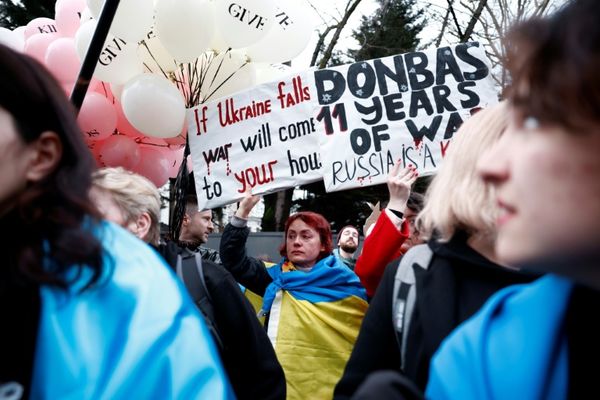By Jason Anderson
Financial professionals woke up to a major announcement Aug. 24 from the Biden administration on federal student loans. This first-ever student loan relief program promises to wipe out between $10,000 and $20,000 in student loan debt for a range of borrowers. Although not a surprise to most who track the student loan space (the White House has been debating this for quite some time,) the implications for clients and advisers are monumental.
Less known is the fact that this announcement encapsulates more than blanket loan forgiveness. It is three separate initiatives meant to lessen the brunt of the covid pandemic. They include: loan forgiveness, a new income-driven repayment plan, and the extension of the student loan payments and interest pause.
As with many major government stimulus programs, there are a lot of details which need to be ironed out. Specifics on the plan are sparse so far. Undoubtedly, as the days unfold, we will know more. Below is an explanation of each of the three parts of the program:
Blanket Loan Forgiveness
Obviously, this provision sets the tone and precedent. This portion of the announcement promises up to $20,000 in loan forgiveness for eligible federal student loan borrowers on their balance logged as of June 30, 2022. Many borrowers will only see $10,000 forgiven, but students who received at least one Pell Grant (which require great financial need while in college) will get up to $20,000. Strikingly, this provision includes undergraduate, graduate, parent PLUS, and defaulted student loans.
As a bonus, the debt relief is not federally taxable (but might be at the state level.) The forgiveness order is designed to offer the maximum relief, targeting defaulted, highest interest, and unsubsidized student loan accounts first.
There is an income requirement to qualify. A borrower’s annual income needs to be below $125,000 (individual or MFS tax status) or $250,000 (MFJ or head-of-household tax status) in 2021 or 2020. Some borrowers will get forgiveness automatically because the Department of Education already has their income information on file. Otherwise, they will have to fill out an application that (we are told) will be released in early October 2022. Applications need to be submitted by December 31, 2023.
There is one important caveat: this only applies to loans held by the Department of Education. This means a few older loans – for instance some FFEL and Perkins loans – will not qualify for this forgiveness. There might be a way, however, to consolidate those loans to qualify.
New Income-Driven Repayment Plan
Although the blanket loan forgiveness provision has gotten most of the headlines, the new Income-Driven Repayment Plan (IDR) will have a significant impact as well. The Wharton School at the University of Pennsylvania estimates this portion of the package could cost up to $450 billion compared to blanket loan forgiveness at $519 billion.
The new IDR plan is a sweetheart deal. It will require borrowers to pay only 5% of their discretionary income toward monthly loan payments. It also uses 225% of the poverty line to calculate the loan payment (a significant increase from current plans). Also, there is no interest accrual in periods of negative amortization as long as the borrower makes their monthly payments.
To show how advantageous the plan is, here is a chart comparing the new plan to the Income-Contingent Repayment (ICR) and Pay As You Earn (PAYE) repayment plans:
Like blanket loan forgiveness, though, a few provisions taper the potential benefit of the plan. This plan will only be available for undergraduate borrowers, and forgiveness after 10 years is capped at $12,000.
Extension of the Payment and Interest Pause
The final part of Biden’s plan is an extension of the federal student loan payments and interest pause through Dec. 31, 2022. This initiative has been extended several times since it began on March 13, 2020.
Surprisingly, payments not made during this pause still qualify for Public Service Loan Forgiveness (PSLF) and the 0% interest provision applies to in-school borrowers. Like blanket loan forgiveness, this program only applies to federal student loans held by the Department of Education unless the lender elects to participate. The borrower might also gain access through consolidation. The White House is signaling that this will be the last extension of this program.
What Are Advisers Thinking?
I have spoken with many advisers about this historic program in forums, a regional FPA conference, and on-calls with clients. Additionally, there has been a deluge of media coverage that includes adviser voices. To say the responses are polarized is an understatement.
Some advisers see this as a monumental failure of the system, primarily because it passes borrowing cost to non-borrowers and taxpayers, does not address the core issue of high college cost, and discourages financial best practices. Other advisers are happy to see something done and view it as a promising opportunity for their clients.
For better or worse, we simply must see how this all plays out. Will this stimulus package increase inflation? Introduce a moral hazard problem into the higher education industry where borrowers take on more debt and colleges increase costs? We simply do not know. There might also be legal challenges.
As our clients trusted advisers, we have an obligation to walk them through this ambiguity regardless of our perspectives on blanket loan forgiveness and its affect on the nation.
How Should Advisers Engage Clients?
Clients have the same hopes, questions, and concerns about this program. That makes this an excellent time to reach out for a discussion. Some clients will have recently paid off their student loans; be their advocate and encourage them to stick with the financial plan. Other clients will be beneficiaries of one of the three components of this relief program; this is a perfect time to see if this changes their financial goals. Forgiveness might give bandwidth to divert funds towards a down payment on a home, start an emergency fund, pay down high-interest debt, or bolster retirement savings.
Financial professionals are encouraged to keep in contact with affected clients between now and December. Clients will undoubtedly have questions on this program as details become available and it is likely their advisers will know those details before they do. Furthermore, borrowers without income information on file with the Department of Education will need to fill out an application for forgiveness. Although that application is not yet available (at the time of this writing), advisers and clients can sign up to be alerted when it is posted here at the U.S. Department of Education.
The reality of Biden’s announcement is that it will be life-changing for some (who will see their balance wiped away) and barely move the needle for others. It is not uncommon for professional degree holders to have hundreds of thousands in debt. For this group, the Biden-Harris program will not change their overall plan. They still need solid financial planning and student loan guidance to gain peace of mind with that much debt hanging over their heads. And for that, they will look to their trusted adviser.
About the Author: Jason Anderson, CFP®, CPA, CSLP® is a lecturer and academic program associate at the University of Kansas School of Business and doctoral student in the personal financial planning program at Kansas State. He also owns Gradmetrics LLC, a college and student loan planning firm. You can reach him at jason.anderson@ku.edu.







